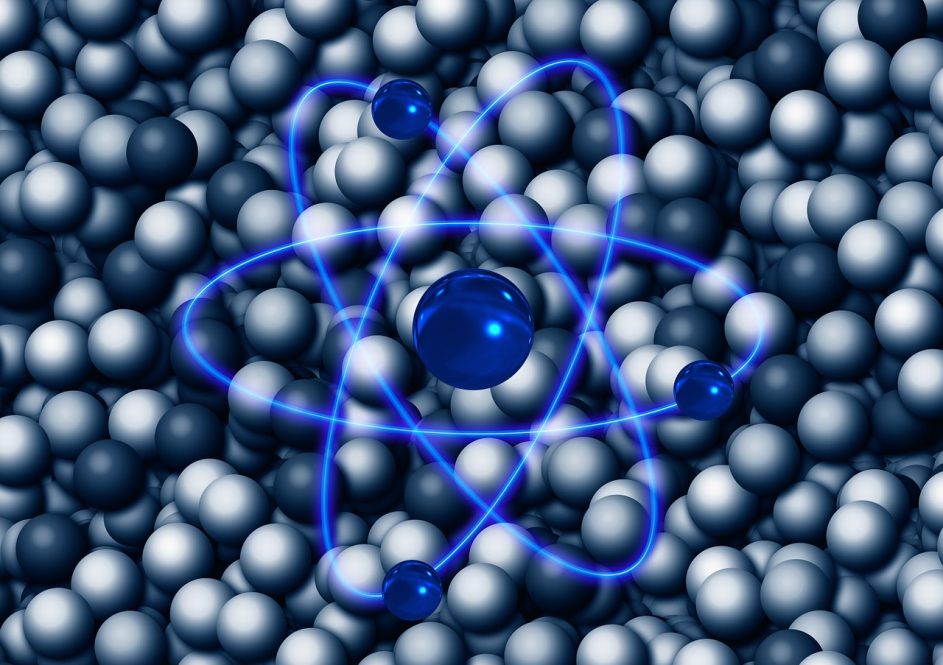The Muon g-2 Theory Initiative has published a white paper on the theoretical calculation of the anomalous magnetic moment of the muon, which will be compared with experimental results

(Pixabay)
An international group of physicists, including two UConn faculty, have published a white paper representing a major step forward in developing our understanding of one of the smallest units of our world, and with it, the basic laws of physics.
Thomas Blum, professor, and Luchang Jin, associate professor, in the Department of Physics are authors on this paper and members of the Muon g-2 Theory Initiative.
The group which includes more than 100 scientists from around the world formed in 2017.
The white paper deals with muons, a type of elementary particle. Muons are a lot like electrons, negatively charged subatomic particles, but they are about 200 times heavier.
Compared with many other elementary particles the muon is easier to study because it's a kind of "Goldilocks" particle. It doesn't interact too strongly nor too weakly with other particles.
Quarks, for example, interact so strongly with other particles they are difficult to isolate for study. But if a particle interacts too weakly with others this is also a problem, because the technology used to measure a particle's properties actually depends on particle interactions.
Because of this, dark matters and neutrinos are difficult to study. Scientists need to build very large detectors in order to have a chance of capturing just a handful of particles. This makes the muon's unique advantages important for probing the unknown.
"We're interested in the muon because it presents an opportunity for something that we can measure extremely precisely in the lab and we can also calculate extremely precisely from our most fundamental theory of nature," Blum says.
This white paper presents the theoretical side of this group's work, which uses cutting-edge calculations to determine the anomalous magnetic moment of the muon.
A particle's magnetic moment is usually described by the g-factor (g), which is theoretically predicted to equal two. But, particles are constantly interacting with other particles, changing this value - this is the anomalous magnetic moment, or g minus two (g-2).
This quantity is critical for evaluating the Standard Model, a description of the fundamental forces and particle types that make up the entire known universe.
The value of the anomalous magnetic moment of the muon is a part of the Standard Model but it has some uncertainty associated with its calculation. Hence, doing a better calculation will strengthen the Standard Model overall.
The theoretical calculations published in this white paper will then be compared to the value from an experiment conducted at Fermilab outside of Chicago.
The agreement or disagreement between these two results could alter our understanding of particle physics as we know it.
"If they don't agree, we know that the Standard Model is not quite right and we have to improve it, we have to change it to include this new effect," Blum says. "Even if we don't find a discrepancy, it's important to test our most fundamental theories as precisely as we can and know when or if they break down."
This latest development builds upon decades of scientific advancement, including the work of Blum and Jin.
Blum was the first to calculate the contribution of quantum chromodynamics (QCD) - one of the three essential forces in the Standard Model - to the muon's anomalous magnetic moment using a numerical technique called lattice QCD.
Since that first calculation Blum, Jin, and their collaborators have calculated the contribution of the hadronic vacuum polarization (HVP) to the anomalous magnetic moment of the muon, producing one of the most precise values at that point using lattice QCD.
"Groups all over the world are doing these calculations and improving the precision and the accuracy of those calculations to the point where, now we believe those are the most robust parts of the HVP calculation and now we can make an accurate comparison of the Standard Model to the experiment," Blum says.
Jin contributed significantly to improving the precision of another hadronic contribution (i.e., arising from QCD) known as light-by-light scattering.
"We made some methodological developments which greatly improved the efficiency and reduced systematic errors," Jin says.
This work is a testament to both advances in computing, as these calculations rely on state-of-the-art supercomputers housed in national laboratories, alongside theoretical advancements.
"We need both," Blum says. "We need the improved algorithms and methods, and we need the most powerful computers we can get our hands on."






